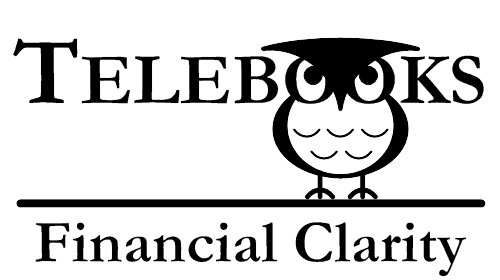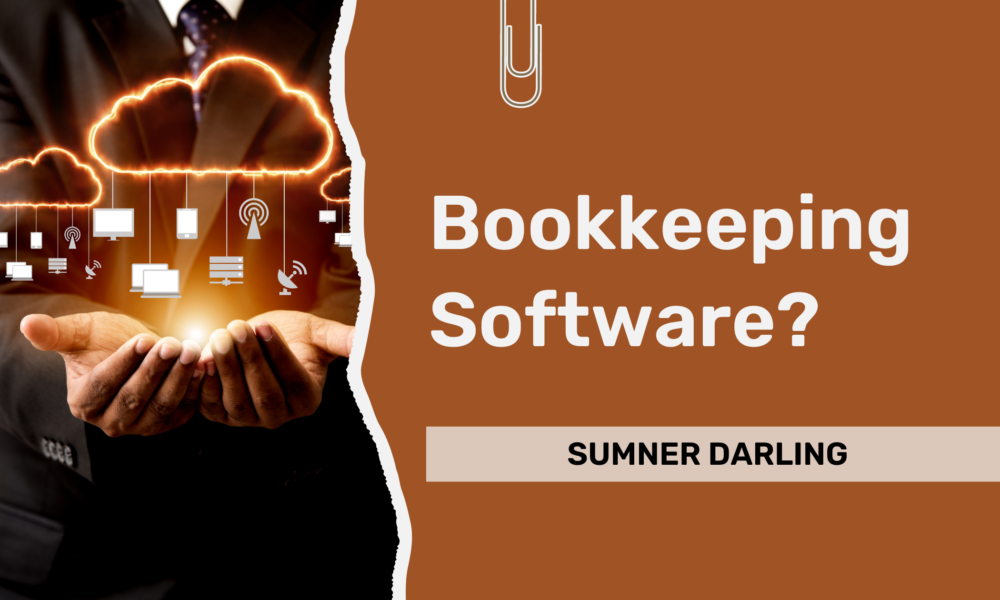When selecting bookkeeping software for architecture firms, it can be challenging to sort through the options and choose the best fit. However, by using a structured approach, you can simplify the process and ensure you select the software that aligns with your firm’s specific needs.

In this blog post, we’ll walk you through a step-by-step process to help you make an informed decision. We’ll use the example of Elemental Architects, a small architecture firm, to show how this process can work in practice.
1. Why the Right Bookkeeping Software is Crucial for Architecture Firms
Choosing the right bookkeeping software for architecture firms is crucial because architecture firms have unique financial challenges. Unlike other small businesses, your firm isn’t just dealing with typical expenses and income. You’re managing complex projects, tracking hours for billable and non-billable work, coordinating with subcontractors, and adhering to specific client budgets. Without an organized system, it’s easy to lose track of these moving parts. But what does this really mean for your firm?

Imagine trying to reconcile your firm’s finances without a solid system in place. You have invoices from multiple vendors, staff timesheets that aren’t properly tracked, and no clear way of knowing which projects are profitable. The result? Hours spent manually gathering information, late payments, and worse—lost revenue due to missed billable hours. You need software that can handle the complexity of your firm’s operations, so you can avoid these costly mistakes.
The Consequences of Poor Financial Management
If your firm doesn’t have the right tools in place, the risks are serious. You could be:
- Overbilling or underbilling clients because you’re not tracking time or expenses correctly.
- Missing deadlines for tax filing due to incomplete financial records.
- Losing out on valuable insights about which projects are the most profitable and where you’re overspending.
The right bookkeeping software for architecture firms helps avoid these risks by keeping your financial data organized and accessible. It automates repetitive tasks like invoicing, payroll, and expense tracking, freeing up your team’s time to focus on more strategic work.
What Small Firms Need in Bookkeeping Software
When choosing bookkeeping software for architecture firms, ensure it offers ease of use, integration, and scalability to meet your firm’s needs. You need software that is:
- Easy to use: If your staff can’t figure out how to navigate the software, it’s not going to help. Simplicity matters.
- Integrated: Your software should work seamlessly with other tools your firm uses, like project management and payroll software. If they don’t talk to each other, your staff will waste time inputting the same data in multiple places, increasing the risk of errors.
- Scalable: Even if your firm is small now, you may grow in the future. The right software will scale with you, allowing you to add new features or users without switching platforms entirely.
2. Key Criteria for Selecting Bookkeeping Software
When selecting bookkeeping software for your architecture firm, you’re not just looking for a basic accounting tool. You need software that understands the specific needs of project-based firms like yours. Here are the key criteria to consider when selecting bookkeeping software for architecture firms:

1. Ease of Use
The best bookkeeping software for architecture firms should have an intuitive interface to ensure your team can manage finances without a steep learning curve. Your team is busy managing clients and projects—they don’t have time to learn complicated software. Look for a platform that has an intuitive interface and offers strong support and training options. For example, does the software provider offer tutorial videos, online help, or live support? The faster your team can get up to speed, the quicker you’ll start seeing the benefits.
2. Cost-Effectiveness
Budget is always a concern for small firms. While it’s tempting to choose the cheapest option, make sure you’re getting good value. Consider not only the upfront cost but also the long-term benefits, such as time saved by automating tasks. Don’t forget to factor in costs for upgrades, additional users, or new features as your firm grows.
3. Integration with Project Management Software
One of the biggest advantages of modern bookkeeping software is the ability to integrate with other tools you’re already using. Does your firm use project management software like BigTime, Monograph, or Harvest? If so, choose bookkeeping software that seamlessly integrates with these platforms, allowing your team to manage everything—from time tracking to invoicing—in one place. This integration is critical for tracking project budgets, time spent, and profitability, all in real-time.
4. Other Integration Capabilities
Beyond project management, your firm likely uses payroll software, invoicing tools, and customer relationship management (CRM) systems. Look for software that integrates well with platforms like Gusto for payroll or HubSpot for CRM. The more integrated your tools are, the more streamlined your operations will be. This also reduces the risk of errors and saves your team time by eliminating the need for duplicate data entry.
5. Accountant Collaboration
Your accountant plays a vital role in managing your firm’s financial health. Does your chosen bookkeeping software make it easy to collaborate with them? Many cloud-based solutions, like QuickBooks Online, offer dedicated access for accountants, allowing them to review and adjust your financials without needing to be in your office. This feature can make tax time much smoother and ensure your books are always up to date.
6. Scalability
As your firm grows, so do your bookkeeping needs. You may need to add users, manage more projects, or even expand into new services. Choose software that can grow with you—whether that means adding new users, integrating new features, or scaling up to handle a higher volume of projects. Platforms like Xero and QuickBooks Online offer scalable pricing plans that grow as your firm does, so you don’t need to worry about outgrowing your software too soon.
7. Automation Features
Automation is key when selecting bookkeeping software for architecture firms, as it can help streamline invoicing, payroll, and expense tracking For example, if your firm bills clients monthly, you can set up recurring invoices that are automatically generated and sent out. Similarly, automating payroll ensures your employees are paid on time without manual effort. Look for software with strong automation features to streamline these processes.
8. Reporting and Analytics
The ability to generate reports that track your firm’s financial health is crucial. Software like Xero and QuickBooks Online offers detailed, customizable reports that allow you to see how each project is performing, where you’re overspending, and how much profit you’re making. These insights help you make better business decisions and keep your firm on track.
9. Mobile Access
As remote work becomes more common, having access to your firm’s financial data from anywhere is essential. Cloud-based bookkeeping software, with mobile apps, lets your team manage finances on the go. For example, FreshBooks offers a mobile app that allows you to track expenses, send invoices, and monitor financial data, all from a smartphone or tablet.
10. Customer Support
Even the best software will occasionally have issues, so responsive customer support is critical. Look for platforms that offer multiple support channels—live chat, email, phone—and have a robust knowledge base. Some platforms even offer 24/7 support, ensuring that your team can get help when they need it most.
11. Security and Data Privacy
Your firm’s financial data is sensitive, so choosing software with strong security features is a must. Look for options that offer two-factor authentication, regular security updates, and encryption of your data. Tools like QuickBooks Online and Xero take data security seriously, ensuring that your firm’s finances are protected from potential threats.
12. Industry-Specific Features
Finally, architecture firms often need project-based billing, time tracking, and detailed expense management. Software that offers these industry-specific features will make managing your firm’s finances much easier. For example, BigTime integrates project tracking directly with bookkeeping, helping firms keep tabs on profitability and timelines. Look for software that understands the needs of professional service firms like yours.
3. Step-by-Step Guide to Evaluating Bookkeeping Software
Step 1: Identify Software Options
The first step in your decision-making process is to identify the bookkeeping software options that are most relevant to your architecture firm. While there are many bookkeeping platforms on the market, not all of them are suited to project-based businesses like architecture firms. You’ll want to focus on software that offers features like project cost tracking, integration with project management tools, and customizable reports that allow you to analyze profitability by project.

Start by researching the most popular software options. For architecture firms, common choices include:
- QuickBooks Online: Widely used across many industries, known for its flexibility and integrations with third-party apps.
- FreshBooks: A simpler, user-friendly platform designed with small businesses in mind.
- Xero: Known for its integrations and cloud-based accessibility, with features for project management and detailed reporting.
As you research, consider your firm’s specific needs. Are you looking for software that integrates with your project management platform? Do you need cloud-based access so your team can work remotely? Do you require industry-specific features like time tracking, expense attribution to projects, or detailed profitability analysis? Answering these questions will help you narrow down your software options. Make a list of 3 to 4 top contenders, ensuring they meet your firm’s essential criteria.
Step 2: Build a Scorecard Based on User Reviews and Expert Analysis
Before customizing your decision-making process, it’s helpful to start with a general comparison of the available software options. Platforms like TrustRadius, G2, and Capterra aggregate user reviews and expert evaluations, providing valuable insights into how well different software performs.

Here’s how to build a scorecard:
- List your criteria: Identify the most important features for your firm, such as ease of use, cost-effectiveness, and integration with project management software.
- Score each option: Based on the reviews and expert analysis, rate each software option on a scale of 1 to 5 for each criterion. For example, you might score QuickBooks Online a 5 for integrations, while FreshBooks might receive a 3.
- Compare the results: Once you’ve scored each software across all criteria, compare the scores to see how they stack up.
This high-level comparison gives you a foundation for more detailed evaluation, allowing you to identify the top contenders before assigning firm-specific weights to each criterion.
Step 3: Assign Weights to Evaluation Criteria
Now that you’ve reviewed the scorecard, the next step is to assign weights to each criterion based on your firm’s unique priorities. Not all criteria are equally important. For example, if your team struggles with complex software, you’ll want to give more weight to ease of use. If you’re on a tight budget, you’ll prioritize cost-effectiveness.

Here’s how to assign weights:
- Identify your firm’s top priorities (e.g., ease of use, cost, integrations).
- Assign a weight to each criterion, with higher numbers reflecting more importance. For example, use a scale from 1-5, where 5 indicates critical importance and 1 indicates less importance.
- Consider the specific needs of your architecture firm when assigning these weights.
The total weight doesn’t need to add up to a specific number; instead, the goal is to ensure that the criteria most important to your firm carry more weight in your final decision.
Step 4: Analyze the Results
Now that you’ve assigned weights and scored each software option, the next step is to analyze the results. The goal here is to make sense of the scores by multiplying each score by the weight assigned to that criterion. This will give you a weighted score for each criterion, ensuring that the most important factors have the greatest influence on the final decision.

Here’s a simple breakdown of how to analyze the results:
- Multiply the score by the weight: For each criterion, multiply the score you assigned to the software by the weight you assigned to that criterion. For example, if ease of use has a weight of 5 and you rated QuickBooks Online a 4 for ease of use, you would calculate 5×4=205 \times 4 = 205×4=20.
- Sum the weighted scores: After multiplying the scores for all criteria, sum them up for each software option. This gives you a total weighted score for each software choice. The software with the highest total weighted score will generally be the best fit for your firm.
- Interpret the results: While the software with the highest score will likely be the best overall choice, remember that this score is based on the specific weights and criteria you’ve chosen. If one software scores higher but has a critical weakness in a key area, you may still opt for a different option based on your firm’s specific needs.
This analysis process gives you a clear, data-driven way to evaluate your software options. It ensures that your decision is based on the criteria that matter most to your firm and provides a solid foundation for selecting the best bookkeeping software.
4. Real-World Example: Applying the Trade Study to an Architecture Firm
To illustrate how this process works in practice, let’s look at a real-world example of a small architecture firm, Elemental Architects. While Elemental Architects is fictional, the tools and strategies are real and practical for firms like yours. This firm has 5 employees: 3 architects, 1 draftsman, and 1 office manager. They are currently managing 5 projects, and the owner wants to implement bookkeeping software that integrates with their project management tool, BigTime.

Step 1: Identify Software Options
The first step in choosing bookkeeping software is identifying options that meet your firm’s most important needs. For Elemental Architects, the key criteria were Ease of Use, Cost-Effectiveness, and most critically, Integration with BigTime.
They evaluated three software options: QuickBooks Online, FreshBooks, and Xero. Each option offered different strengths:
- QuickBooks Online: Its ability to integrate with BigTime and its balance of usability and advanced features made it a strong contender for firms needing both flexibility and power.
- FreshBooks: Known for its simplicity and great customer support, FreshBooks is ideal for firms that prioritize ease of use, though it lacks integration with BigTime.
- Xero: Xero stands out for its cost-effectiveness and robust automation, though it doesn’t integrate with BigTime. However, it does support other tools like BQE Core.
Selecting software options that align with your firm’s priorities ensures that your evaluation is relevant to your needs, making the comparison process more effective.
Step 2: Present the Scorecard Based on User Reviews and Expert Analysis
Elemental Architects built the following scorecard based on detailed user reviews and expert analysis from platforms like TrustRadius, G2, and Capterra. This comparison evaluates how well QuickBooks Online, FreshBooks, and Xero perform in the areas most relevant to small architecture firms.
When the scorecard was built, the firm decided to replace the general criterion Integration with Project Management Software with three specific criteria for commonly used project management tools: BigTime, BQE Core, and Monograph. This adjustment allowed for a more detailed and practical comparison based on the specific tools that Elemental Architects uses.
| Criteria | QuickBooks Online | FreshBooks | Xero |
|---|---|---|---|
| Ease of Use | 4 | 5 | 4 |
| Cost-Effectiveness | 3 | 4 | 5 |
| Integration with BigTime | 5 | 0 | 0 |
| Integration with BQE Core | 5 | 0 | 5 |
| Integration with Monograph | 5 | 0 | 0 |
| Other Integration Capabilities | 5 | 4 | 5 |
| Accountant Collaboration | 5 | 3 | 5 |
| Scalability | 4 | 3 | 4 |
| Automation Features | 5 | 4 | 4 |
| Reporting and Analytics | 5 | 3 | 4 |
| Mobile Access | 4 | 5 | 4 |
| Customer Support | 3 | 5 | 4 |
| Security and Data Privacy | 5 | 4 | 4 |
| Industry-Specific Features | 4 | 3 | 4 |
This scorecard provides a quick comparison based on feedback from users and experts. It highlights how well each software performs in the areas important to Elemental Architects. This scorecard may also be helpful for readers when conducting their own trade studies, as it offers a starting point for comparing software based on real-world experiences.
Step 3: Assign Weights to Evaluation Criteria
Once the scores were assigned, Elemental Architects moved on to weighting the criteria based on what mattered most to them. Based on their decision to use BigTime for their project management needs, they assigned a high weight to Integration with BigTime (5), while assigning zero weight to Integration with BQE Core and Integration with Monograph.
Here’s how they assigned weights:
- Ease of Use: 5
- Cost-Effectiveness: 4
- Integration with BigTime: 5
- Integration with BQE Core: 0
- Integration with Monograph: 0
- Other Integration Capabilities: 3
- Accountant Collaboration: 3
- Scalability: 2
- Automation Features: 4
- Reporting and Analytics: 5
- Mobile Access: 3
- Customer Support: 4
- Security and Data Privacy: 3
- Industry-Specific Features: 5
By assigning weights to each criterion, Elemental Architects ensured that the factors most important to their business were given appropriate priority. This weighting process tailored the trade study to the specific needs of the firm, ensuring the decision aligned with both their current operational requirements and future growth goals.
Step 4: Analyze the Results
At this point, you’ve done the hard work—assigning weights and scoring each option objectively. Now comes the moment of truth. But here’s something to remember: the software with the highest score may not necessarily be the perfect fit for your firm. What it does give you, though, is a clear and objective way to compare your options based on what matters most. This method gives you a structured approach to making the best decision, ensuring that every important criterion is considered and factored into the final choice.
After calculating the weighted scores for each software option, Elemental Architects compared the total results:
| Criteria | Weight | QuickBooks Online | FreshBooks | Xero |
|---|---|---|---|---|
| Ease of Use | 5 | 4 (20) | 5 (25) | 4 (20) |
| Cost-Effectiveness | 4 | 3 (12) | 4 (16) | 5 (20) |
| Integration with BigTime | 5 | 5 (25) | 0 (0) | 0 (0) |
| Integration with BQE Core | 0 | 5 (0) | 0 (0) | 5 (0) |
| Integration with Monograph | 0 | 5 (0) | 0 (0) | 0 (0) |
| Other Integration Capabilities | 3 | 5 (15) | 4 (12) | 5 (15) |
| Accountant Collaboration | 3 | 5 (15) | 3 (9) | 5 (15) |
| Scalability | 2 | 4 (8) | 3 (6) | 4 (8) |
| Automation Features | 4 | 5 (20) | 4 (16) | 4 (16) |
| Reporting and Analytics | 5 | 5 (25) | 3 (15) | 4 (20) |
| Mobile Access | 3 | 4 (12) | 5 (15) | 4 (12) |
| Customer Support | 4 | 3 (12) | 5 (20) | 4 (16) |
| Security and Data Privacy | 3 | 5 (15) | 4 (12) | 4 (12) |
| Industry-Specific Features | 5 | 4 (20) | 3 (15) | 4 (20) |
Total Score | | 199 | 161 | 174 |
In this case, QuickBooks Online had the highest total score, largely due to its strong integration with BigTime and its overall versatility for small architecture firms like Elemental Architects. Although FreshBooks excelled in Ease of Use and Customer Support, its lack of integration with BigTime made it less suitable for this firm’s specific needs. Xero performed well in Cost-Effectiveness and Integration with BQE Core, but it, too, lacked the crucial BigTime integration.
Ultimately, QuickBooks Online emerged as the best fit, demonstrating that the software with the highest score across the firm’s key criteria is often the most suitable, though firms should always weigh these factors against their unique operational needs.
Conclusion: Choosing the Best Software for Your Firm’s Unique Needs
Selecting the best bookkeeping software for architecture firms can feel overwhelming with so many options available. However, by following a structured, criteria-driven approach like the one outlined here, you can make an informed decision based on what matters most to your firm.
For Elemental Architects, QuickBooks Online emerged as the best fit, but your firm’s needs may differ. The strength of this process is its flexibility—you can customize the evaluation based on your specific priorities, such as integration with project management tools, ease of use, or cost-effectiveness. This trade study approach offers a clear, objective method to compare software options, helping you make the best decision for both your current operations and long-term growth.
At Telebooks Network, we understand the challenges that small architecture firms face when navigating financial decisions like these. Our goal is to empower firms like yours to take control of their finances.
Ready to take control of your firm’s finances? Subscribe to our blog for more insights, tips, and resources specifically designed for small architecture firms. Stay updated on the latest strategies to help your firm achieve financial success, just like the decision-making process discussed in this post.




